What's New
Displaying results 401 - 410 of 4913
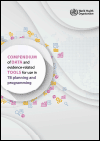
Resource | Tools,
This compendium is designed to help National TB Programmes (NTPs) to make best use of the available tools for policy, planning and programmatic action. The document summarizes information about the key tools related to data and evidence that are available for use in TB planning and programming, and how they can be applied. The tools that are profiled are described in terms of how they fit within the People-centred framework for tuberculosis programme planning and prioritization.
Together with the people-centred framework, this compendium aims to enable better use of data and evidence for TB programme planning at both the national and subnational levels. It is designed to help NTPs and their national stakeholders to understand how and when different data and evidence-related tools could be used.

Resource | Publications,
This implementation brief addresses integration of HIV testing services into family planning (FP) services. It is intended as a practical resource for national health programmes seeking to introduce or scale up HIV testing and linkage to HIV prevention, sexually transmitted infection, and antiretroviral therapy services in FP.
This document highlights emerging good practices and country experiences of integrated HIV prevention and testing services within FP and advocates for increased linkage for FP clients to HIV services according to their needs.
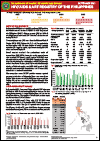
Resource | Fact Sheets,
The first case of HIV infection in the Philippines was reported in 1984. Since then, there have been 90,960 confirmed HIV cases reported to the HARP. Ninety-four percent (85,578) of those diagnosed were male and 6% (5,371) were female. At the time of diagnosis, more than half (51%, 46,162) were 25-34 years old while 26,241 (29%) were youth (15-24 years old). The median age was 28 years old (age range: 1 month - 82 years). Thirteen percent (12,172) of the reported cases had clinical manifestations of advanced infection at the time of testing. Moreover, 67% (61,206) of the total diagnosed cases in the Philippines were reported from January 2016 to September 2021.
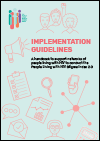
Resource | Guidelines,
The PLHIV Stigma Index Implementation Guidelines: A handbook to support networks of people living with HIV to conduct the PLHIV Stigma Index 2.0. The Implementation Guidelines provide step-by-step guidance on all phases of implementation and link to many helpful templates and tools that can be used throughout the process.

Resource | Guidelines,
Voluntary medical male circumcision (VMMC) has been recommended by WHO and UNAIDS since 2007, and was re-evaluated in 2020 as an effective intervention for the prevention of heterosexually acquired HIV in men in settings where the prevalence of heterosexually transmitted HIV is high, with a focus on 15 countries in sub-Saharan Africa. These countries have established and rapidly scaled up VMMC within HIV programmes, and through 2019 over 27 million VMMCs were performed.
The WHO 2020 VMMC Guidelines, and previous guidance documents, had identified reaching men at higher risk of HIV as a future priority for VMMC programme and research efforts. The 2020 guidance focused first on providing an up-to-date evidence summary on methods for enhancing uptake among adult men generally.
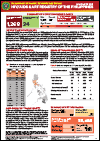
Resource | Fact Sheets,
In November 2021, there were 1,268a confirmed HIV-positive individuals reported to the HIV/AIDS & ART Registry of the Philippines (HARP) and were accounted to the total (93,364) reported cases since January 1984. Moreover, 18% (223) of individuals reported in November had clinical manifestations of advanced HIV infection at the time of testing.
Ninety-six percent (1,211) of the reported cases were male. Of the total male cases, 2% (29) identified themselves as female (transgender women) and 26% (310) reported their gender-identity as others at the time of testing.

Resource | Publications,
Joint actions by the Global Fund and UNAIDS are guided by a strong alignment of strategies, goals and targets. UNAIDS has worked with all stakeholders to set a common agenda and targets within the Global AIDS Strategy 2021–2026, and the United Nations General Assembly confirmed this strategy and its ambitious targets within its 2021 Political Declaration on HIV and AIDS: Ending Inequalities and Getting on Track to End AIDS by 2030.
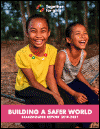
Resource | Publications,
Together for Girls is proud to share “Building a Safer World,” our 2019-2021 Stakeholder Report. This report highlights three years of global collaboration as a partnership, generating quality data, raising awareness of solutions and galvanizing change.
With the increased risks of violence against children during COVID-19 and beyond, our partnership’s mission is more urgent than ever. However, the results of our collective effort demonstrate that when we work together, we can successfully respond to global challenges that once seemed insurmountable.
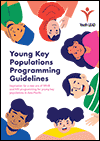
Resource | Guidelines,
The programming guidelines aims to support organizations to implement programmes that address the realities and rights of YKP in Asia Pacific. The guidance provided herein is grounded in the experiences of a diversity of YKP and aims to introduce creativity, critical thinking and inspiration to the sector.
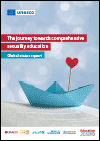
Resource | Publications,
Comprehensive sexuality education (CSE) is central to children and young people’s well-being, equipping them with the knowledge and skills they need to make healthy and responsible choices in their lives.
This report draws on multiple data sources to provide analysis of countries’ progress towards delivering good quality school-based CSE to all learners. 85 per cent of 155 countries surveyed have policies or laws relating to sexuality education, with considerably more countries reporting policies to mandate delivery at secondary education level than at primary level. However, the existence of policy and legal frameworks do not always equate to comprehensive content or strong implementation.





